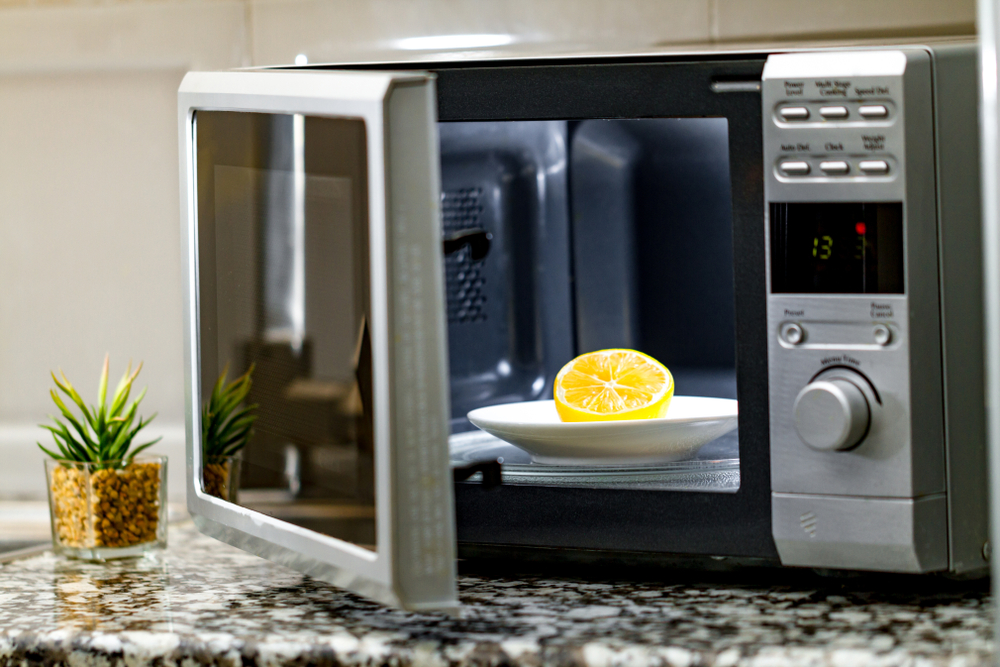Microwaves are convenient, and easy to use. They are also easier to maintain that conventional ovens. Cleaning Microwaves is quite easy, its just that they need cleaning at least once, perhaps twice, per week.
Regular daily use will slowly get the inside of the microwave a little dirty. But so will one overflowing soup bowl or bursting reheated package. So we should clean up any mess like this very promptly.
The inside of the microwave should be spotless. We should clean at the first sign of any mess. The inside of the device should never stain, unless the spill is left for too long.
Unlike convention Ovens, which require special cleaners for baked on grease, it is possible to clean Microwaves with common kitchen products. We don’t need bleach, just vinegar and BiCarb of Soda.
General Microwave Cleaning:
Combine 1 cup of water with some citrus slices (lemon, lime …etc.) and a few tablespoons of vinegar.
Place this cup of liquid in the centre of the microwave and turn on the power for a few minutes. Let it boil and produce steam.
Let the device sit for a few minutes, and the remove the bowl and wipe the inside of the microwave clean.
Remove the turntable and wash it like any other dish. Only put it back when it is dry.
Greasy surfaces
Wipe down the surfaces, like the inside of the window, with a sponge and Bi Carb of Soda.
Wipe down surfaces with a solution of vinegar and water.
If there is stubborn grease, then use a strong detergent. Even soapy dish soap and hot water can work well. But make sure to clean this off with plenty of clean water.
For strong odours in the microwave let the device air out, and place a bowl of Bi Carb of Soda inside. Odour removing gel works for more stubborn problems.
Professional cleaning give us more time for the important aspects of life. And it gives the best results.
Information Disclaimer
The content of this article is meant for informational purposes only and should not be considered a source of professional advice, recommendations, or endorsements. It is not a substitute for seeking expert guidance or making well-informed decisions based on individual circumstances. Although we strive for accuracy and reliability, we cannot guarantee the information's completeness or suitability for all situations. Readers are urged to verify facts, consult experts, and consider their own context before taking actions or decisions based on this content. No warranties, explicit or implied, are provided regarding the accuracy, timeliness, or completeness of the presented information. Relying on this information is at the reader's own discretion and risk. We encourage readers to consult relevant professionals or experts for advice tailored to their specific needs. Neither the author, publisher, nor any affiliated parties will be held responsible for errors, omissions, or damages resulting from the use or reliance on the information in this article.

